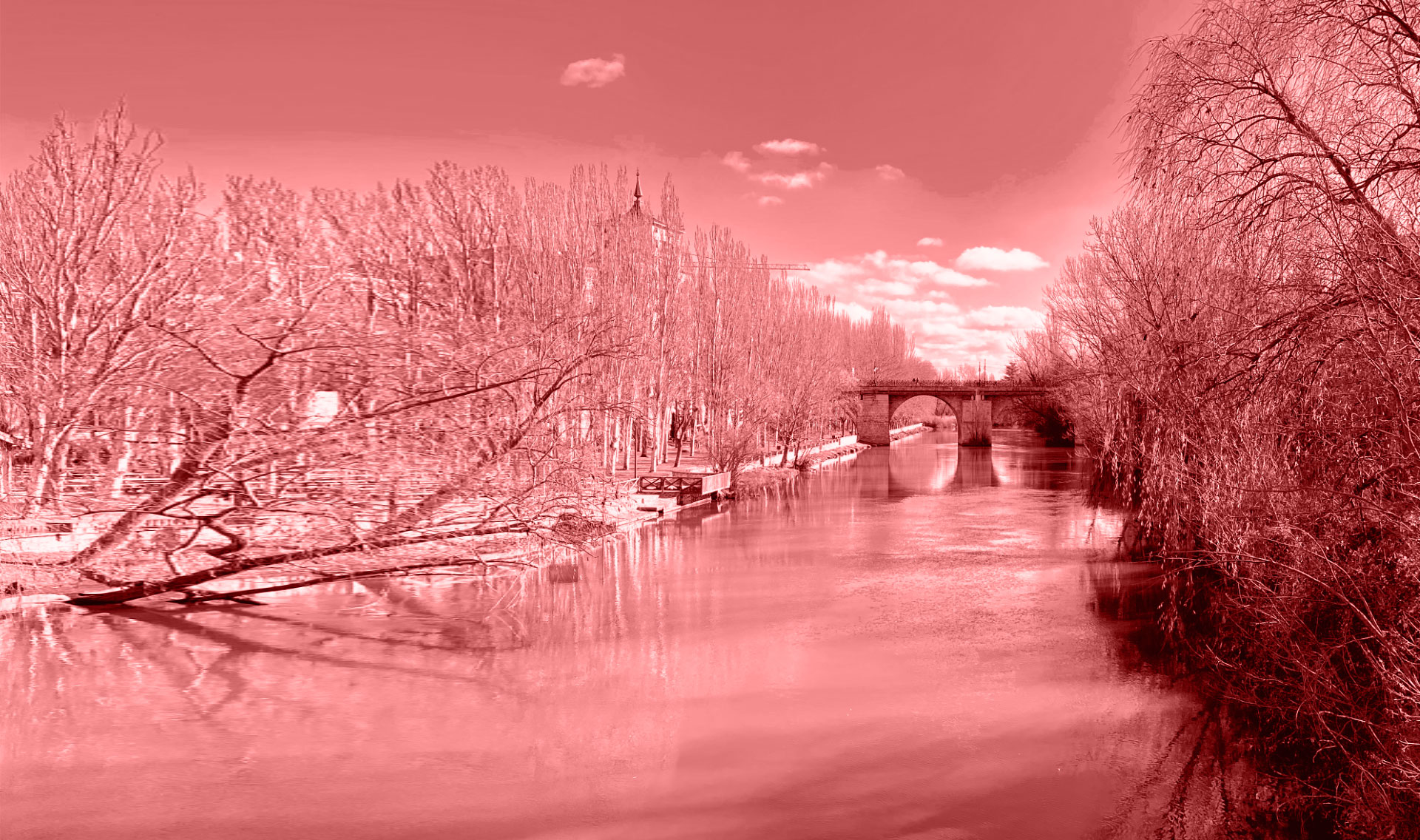

A
lthough without written testimonies about its founding, it is believed that it was born as a communication link by a fortress. It was during the “Concilio de Husillos” council in 1088 when the name of Aranda was written for the first time. In the following centuries, the town was growing with the greatest transfer of people through the lands recovered from Muslim control and thus became it on a “villa” (town) in the thirteenth century by order of Sancho IV.
The first defensive wall of Aranda de Duero, of which there are hardly any remains, was built between the twelfth and thirteenth centuries, but the urban expansion forced a construction of a second wall in the fourteenth century. All this is reflected in the magnificent plan of Aranda de Duero, dated 1503, which was the first map in three dimensions made in Spain. The file is currently preserved in the Simancas Archive and it is interesting to note how many of the buildings of the time are still standing today.
The “pass by” town that was Aranda de Duero became on an agricultural, livestock town and with the presence of masters in different trades. The fifteenth and sixteenth centuries were of great strength with the arrival of high lineage families such as Acuña, Rojas or Zúñiga, attracted by the great strength of wine at that time. In addition, the construction of the great temple of the town, the church of Santa María, must be noted. About 4,000 people lived in a town that was frequented by the monarchs of that time. This splendour was lost over the years and at the end of the seventeen century only 771 inhabitants were counted.
Only in the second half of the twentieth century was the great transformation of Aranda Duero from an agricultural and “pass by” town to a town that took advantage of its strategic situation to attract large industries. And so it currently has some of the most important companies in Castilla y León, such as Michelin, Calidad Pascual or GSK, to name a few examples, besides being favoured by the unstoppable growth of Ribera del Duero wines .
With a population slightly over 30,000 inhabitants, Aranda is the capital of the Ribera del Duero region and it has a lively economic and cultural centre because of its location close to cities such as Madrid, Burgos, Soria, Segovia, Palencia or Valladolid.
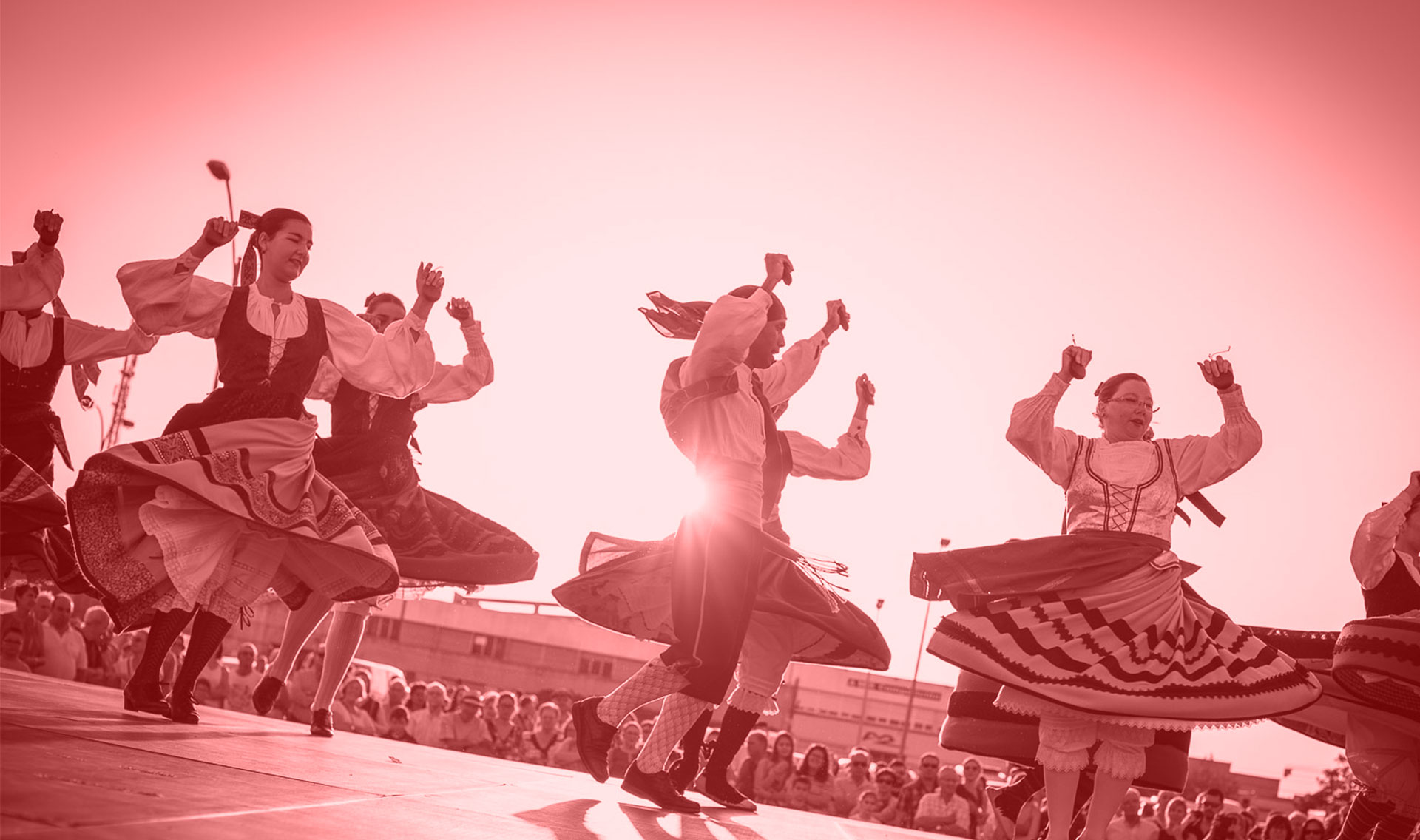
T
he patron saint of the city is the Virgen de las Viñas (Virgin of the Vines), whose statue is in the hermitage of the same name located at the north of the town. The local town celebrations are in honour of this virgin and they take place in the first half of September for nine days, in which the “peñas” (clubs) ensure the party and not to stop the music.
Aranda de Duero has grown rocked by our most important good that is Ribera del Duero wine, around it, an agri-food industry was created based on experimentation, innovation and tradition, being sustainable and integrating agriculture which It is allowing the difference of our wines against EU territories with similar grape varieties.
Aranda de Duero is an emerging, dynamic town with a young, enterprising population and prepared for the challenges of the EU in 2022, committed to its land, with a strong character and personality. A land historically linked with the wine and binder of a region oriented to the same objectives.
The basis of our growth is to interact with the natural wine cluster, which has been created with an important degree of development and that concentrates a large part of the elements which characterize the territory. This natural group of companies greatly facilitates the definition and development of the town Smart Specialization Strategy.
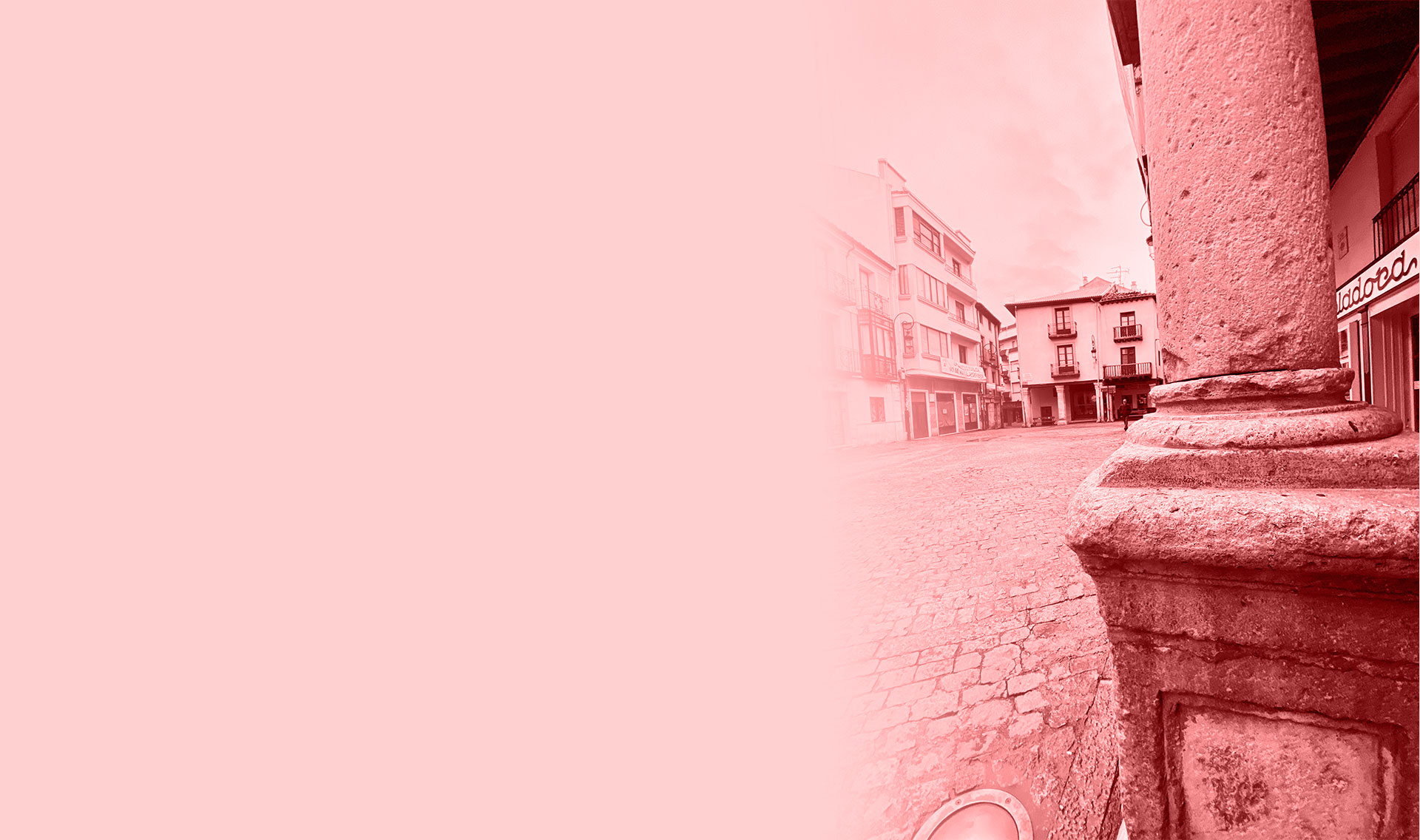
T
he cute Plaza de Trigo refers to what for many centuries was the place where the Aranda market was held. Already in the fifteenth century all kinds of cereals were sold there and the arcades were enabled so the salesmen could shelter on rainy days.
In this square there can be observed buildings from different eras, but of great relevance. One of the simplest ones has a wooden balcony that, despite not being at its best, is a clear example of Castilian popular architecture and, as such, it is reproduced in the Pueblo Español de Barcelona.
In number three of the square, with a sculpted facade of fine trace, it is the house where the Minister Don Diego Arias de Miranda was born, notable person of the town and, in front of this house, the so-called Casa de los Fantasmas (House of Ghosts), which was remodelled by Don León Berzosa at the beginning of the 20th century.
Towards the Isilla Street we will find on the right side the Caja de Burgos Cultural Center, former Teatro-Cine Principal (Main Theater-Cinema), and on the left side the Casa de Cultura (Culture House). This square welcomes a large part of the city's cultural activity, such as the International Music Band Contest or the Sonorama-Ribera Indie Music Festival, which has one of its most emblematic morning milestones in this corner of the town.
Plaza del Trigo square narrows to give rise the Isilla street, a pedestrian stretch that is the vital center of the town. Almost all the Aranda citizens (arandinos) pass at some time of the day by this route whose name comes from the word "dehesilla" or small pasture. Some of its noble buildings have disappeared over time, but it is still where many of the shops and restaurants of the town are located.
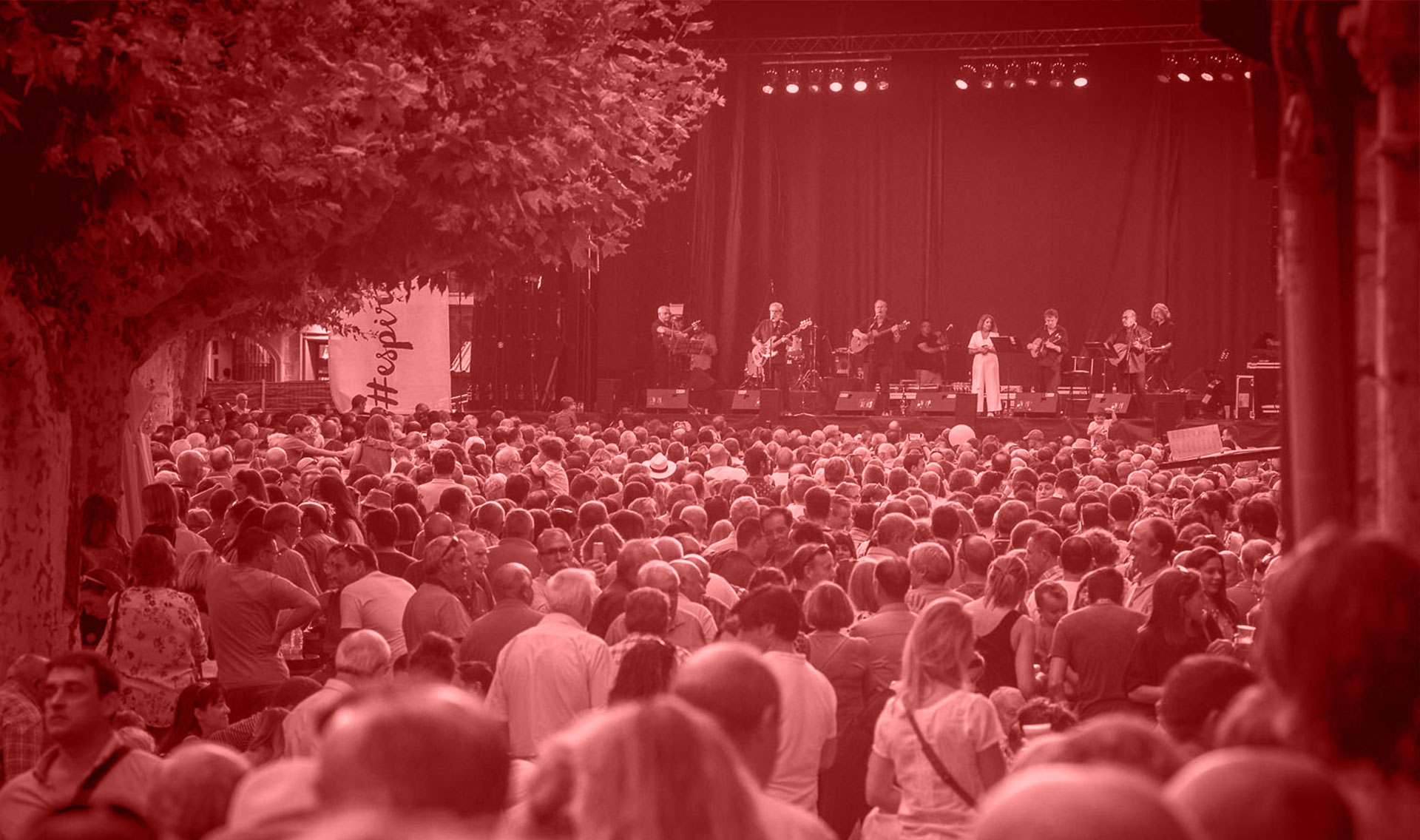
T
o be in the Plaza Mayor de Aranda is to be in the true heart of the town and here you can feel like nowhere else the throbbing of the city. What today is a meeting point, throughout history has been the scene of unforgettable moments.
Here medieval tournaments were held and the young people of the main lineages clashed with the weapons of the time in shows that congregated the masses.
Bullfights were also celebrated, the last one celebrated in 1866, or it was the place chosen to carry out guerrillas during the War of Independence. The Plaza emerged outside the first city wall and was known as Plaza Nueva for being after Plaza del Trigo. With the construction of a second wall, the square became part of the urban center and took its current form around 1454 when houses were allowed to be built on the southern part of the wall, leaving a corridor so that soldiers could do Your rounds
Although it cannot be said that there is homogeneity in the houses that make up the square, there are examples of buildings from different eras and, it is necessary to highlight the porch of the southern area that was already built in its day to house the merchant's stalls .
This market had so much solera that in the year 1326, under pressure from the Jewish community, King Alfonso XI gave order to move to Mondays, since Saturday was the sacred day for people who professed this religion.
In this square, in what was known as Torre del Duero or Casa del Corregidor, the City Hall has been located since the 16th century. In front of him is the Tertulia building, a recreational society born in the mid-19th century, at which time the local bourgeoisie used the square for Sunday walks. Another possibility is to visit the Interpretation Center of the Architecture of Wine, CIAVIN, which hosts a pleasant exhibition on how the wine tradition has influenced the architecture of Aranda and the entire region. and the collection of traditional toys found in the Tourist Office.
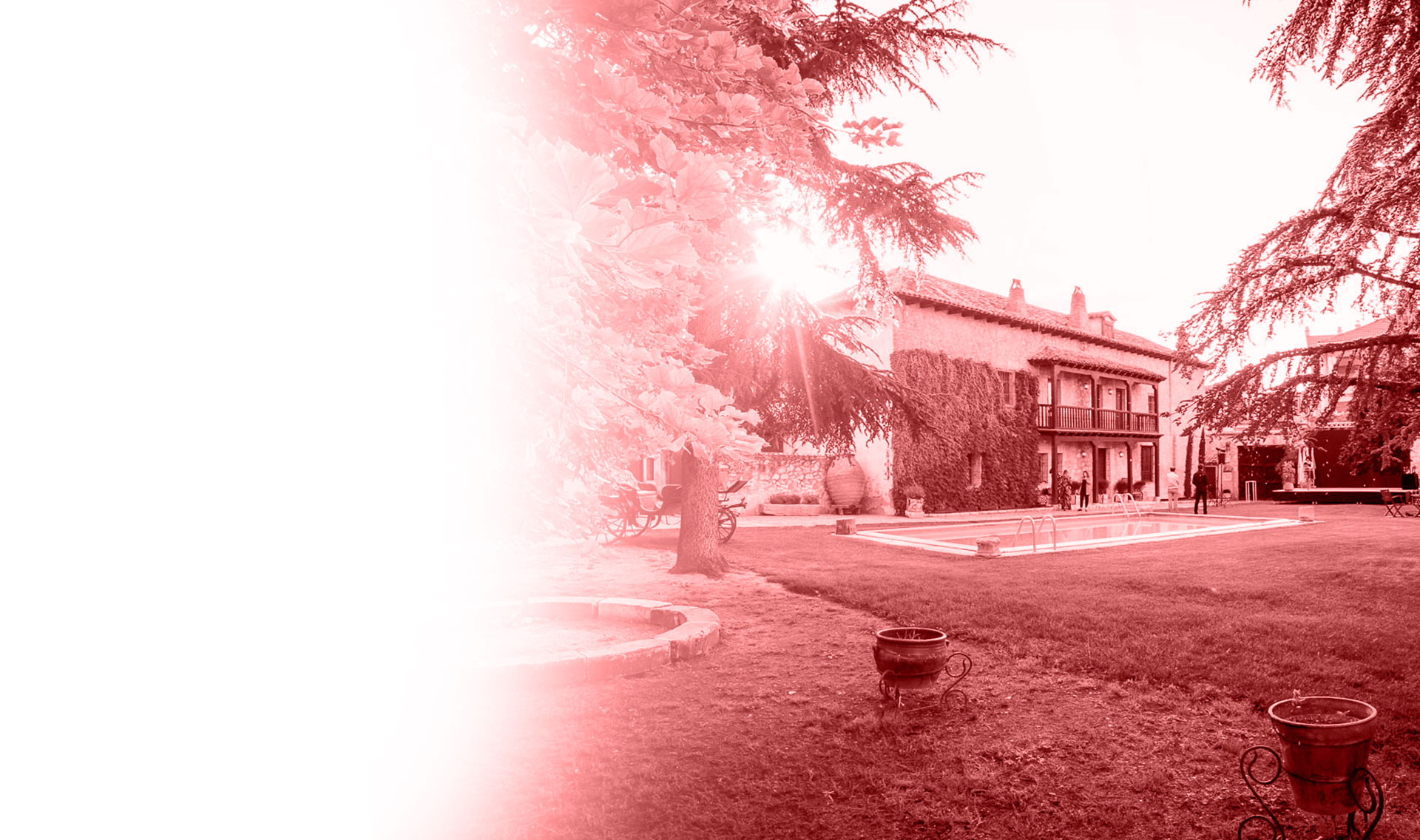
T
he increase in population of Aranda in the thirteenth and fourteenth centuries forced the City Council to build a new fence that included the neighborhoods that had been created throughout the Middle Ages, such as Barrio Nuevo, Plaza Nueva or Isilla Street.
Its inhabitants pleaded at the beginning of the 16th century with the owners of a house that prevented them from easily accessing the center of the town. They complained that to get to the church of Santa Maria they had to pass through the alley of the Well, according to the witnesses of the lawsuit, one of the dirtiest in Castile, where he could not spend the per diem and where the men threw the women.
In one of the sections of the street is the Plaza del Rollo, with its emblematic stone stately symbol. And right there is the Berdugo Palace, surely the most representative civil monument of Aranda. Recognizable for its superb masonry facade adorned with beautiful shields that recall its noble origin.
The builder of this fifteenth-century palace, Martín Durango, was an accountant to the Count of Miranda and his trace remains true to his original style despite having undergone some modifications over the years.
It is said that Napoleon himself lived four days in this palace in November 1808, sleeping in a unique baroque-style bed, so he made use of the rooms of this great mansion, including a library, chapel, halls and chambers. adorned with furniture from different centuries. The patio with columns and wooden balustrade deserves a special mention in a double gallery. In the center of the courtyard is a well and some of the carriages used by its former owners.
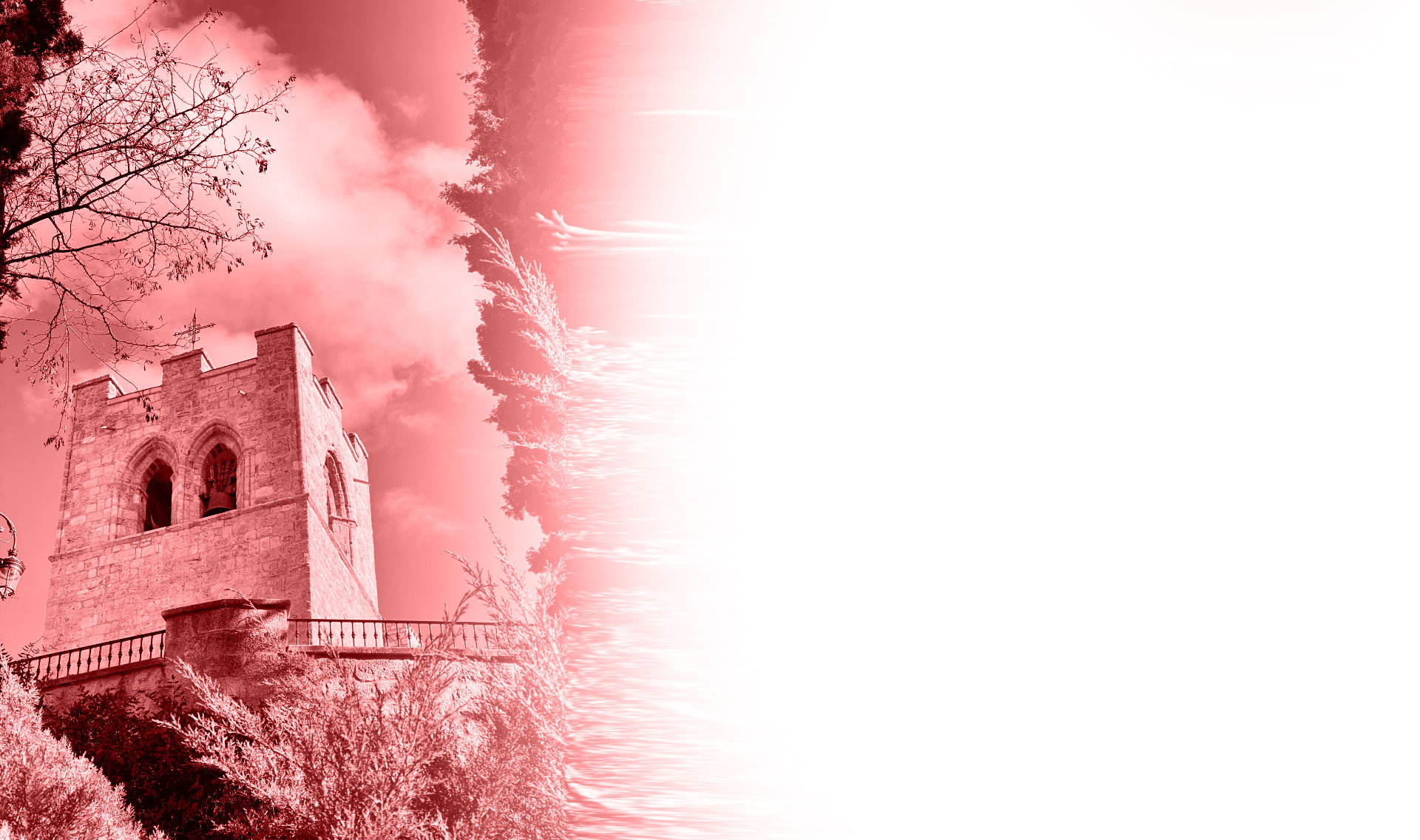
T
he church of San Juan Bautista is the oldest temple in the city and one of the points with the best views of the river banks and the Romanesque bridge. In its exterior is the bust of General Gutierrez, famous Arandino military winner of Nelson and defender of Santa Cruz de Tenerife at the end of the 18th century.
San Juan was built in several phases. The oldest part is the bell tower, probably built in the thirteenth century as part of the first defensive wall of the town. The current temple began to be built in the fourteenth century and ended a century later.
The architects thought to enlarge it, but they had to change their mind and the works did not continue.
On the outside of the temple, the highlight is the southern facade of purist Gothic style that is chaired by a statue of St. John on the baroque eardrum and has nine archivolts that offer an image of solemnity, very much in the line of sobriety Castilian
Inside the temple there are three naves and the chapel of Las Calderonas stands out, in which a beautiful Plateresque altarpiece from the mid-16th century is shown, as well as a complex cross vault.
The great year of the Church of San Juan was 1473, when inside the temple the Council of Aranda was presided over by Bishop Alonso Carrillo de Acuña. After intense debates some decisions were taken to end the relaxation in which the clergy had fallen in matters related to the game, the obligation to officiate a certain number of masses or the presence of concubines. On the other hand, the struggle between Isabel and Juana la Beltraneja was felt in the background to seize the throne of Castile.
At present the church has become a Museum of Sacred Art and houses the exhibition entitled "The ways of the Light", where you can see some of the most important religious pieces of the riverside region.
Opposite the main entrance is the Casa de las Bolas that houses the current painting museum of Félix Cañada. It is a very interesting art gallery, as it houses works of different styles and periods.
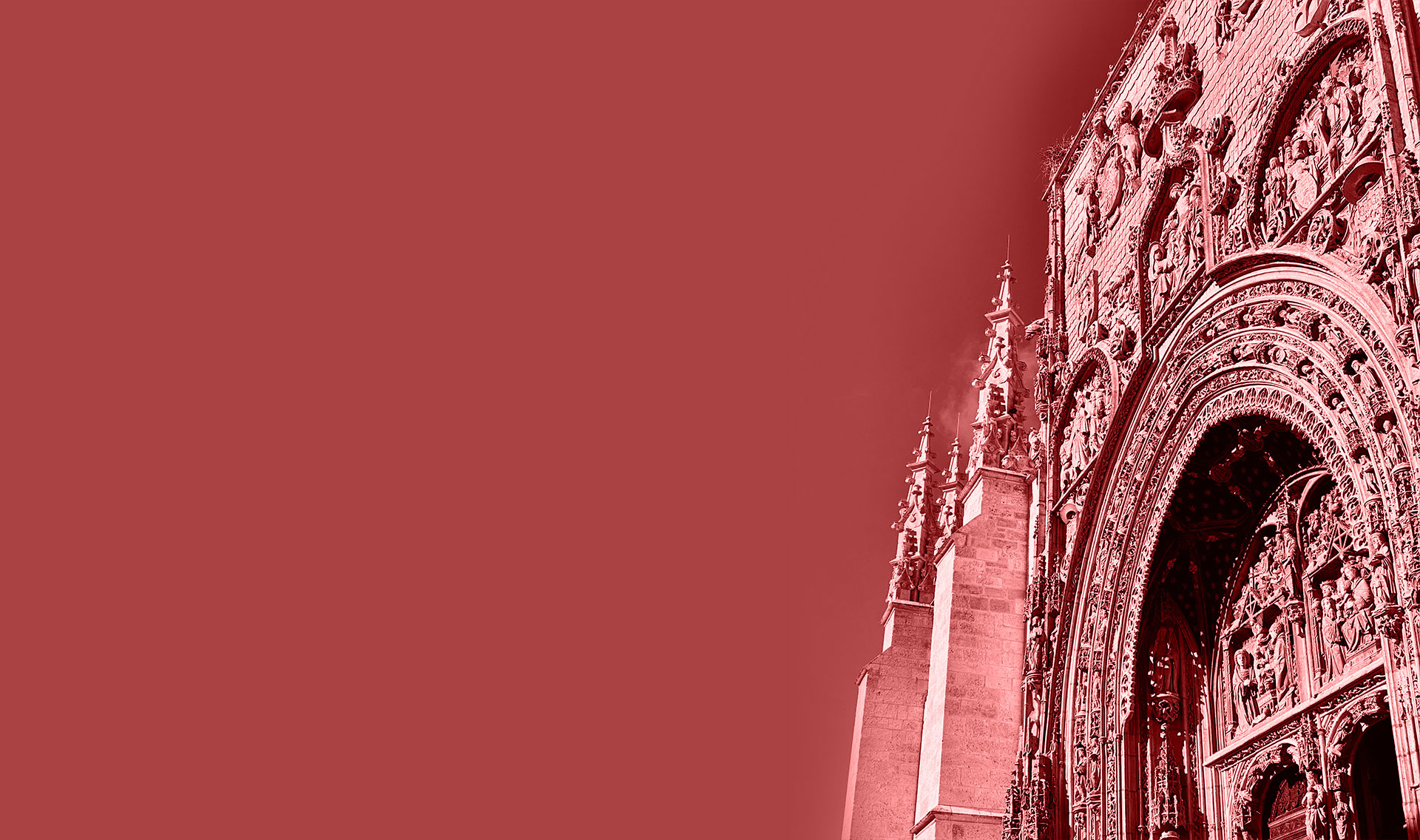
T
he south facade of the church of Santa María is a great tapestry. Halfway between the final Gothic and the Renaissance, it was designed to shelter a large mural on its main facade to make divine power visible. Each of its architectural elements tells some sacred story through the power of the image, which was essential in medieval society in which the majority of the population could not read.
That lack of education of the time has left us a unique facade. The figures that are located in the lower part of the facade are the four Fathers of the Church of the West: San Ambrosio, San Jerónimo, San Agustín and San Gregorio Magno. The church is dedicated to the Virgin, so that the eardrum contains some of the most characteristic scenes of her life. Thus, we find the Birth of Jesus and the Epiphany, and at the top some small scenes of the Annunciation and the Magi.
The door is double and is separated by a mullion where the Virgin appears to breastfeed the Child and is completed with a series of figures of evangelists, apostles and some saints of great relevance and devotion in the town such as San Roque, San Lorenzo or San Anton. The reliefs in wood of the door were replaced by copies for their protection and the original tables can be seen in the Museum of San Juan.
At the top of the facade there are three large reliefs that represent the Passion of Christ. The central figure shows the scene of the Crucifixion and on both sides, within two medallions, we see the scenes of Christ on the road to Calvary and the Resurrection.
Precisely this square hosts the most striking act of Holy Week in Aranda de Duero. It is the descent of the Angel that takes place on the morning of Easter Sunday in which a child emerges from a figurative cloud to meet the virgin, to whom the black veil is removed as a sign of joy for the resurrection of Christ. Thousands of people cram the square to see this moment full of emotion.
Inside the temple we will find the magnificent staircase of the choir built in 1523, attributed to Juan and Sebastián de la Torre, in which the passage from the Gothic to the Renaissance is appreciated, keeping Mudejar memories in it. Of all the movable assets that are guarded, it is worth mentioning the beautiful Renaissance pulpit with a hexagonal shape entirely carved in walnut. Another notable element is the presence of religious images such as the Holy Christ of Health in the mid-16th century.
Santa María is the great church of the city, its architectural symbol and the place where much of its history has been written.

Y
oung and old people of all ages take advantage of the shade of the trees of the Gardens of Don Diego to take a break or spend the morning watching the flow of cars and people who do not stop passing through this square, the city's business center.
Centuries ago it was known as Resin Square, since the resin from nearby pine forests was deposited there, and at the end of the 19th century it was the place chosen for the cattle and wood market. But, speaking of cattle, the square was long before a resting place for transhumant merino sheep. Here in 1784 a palace was built by the Bishop of Osma, Bernardo Antonio Calderón, which was later converted into a seminary school of the friars of the Heart of Mary.
In this square was also the Hotel Ibarra, an establishment that frequently visited Alfonso XII at the beginning of the 20th century to taste fried eggs on the way to their summer vacations in San Sebastián.
The name of the square refers to Don Diego Arias de Miranda, an Arandino born in 1845 who became Minister of the Navy and Justice and Finance. To get an idea of his long political life, it is enough to say that he represented in the Congress of Deputies the constituency of Aranda in 22 legislatures, being finally elected senator for life.
In the center of the square there is a monument in which his statue is located. This work was made after his death in 1929 by Emiliano Barral. It was funded by popular cost. The primitive gardens were designed by the Sevillian painter and landscape designer Javier Winthuysen.
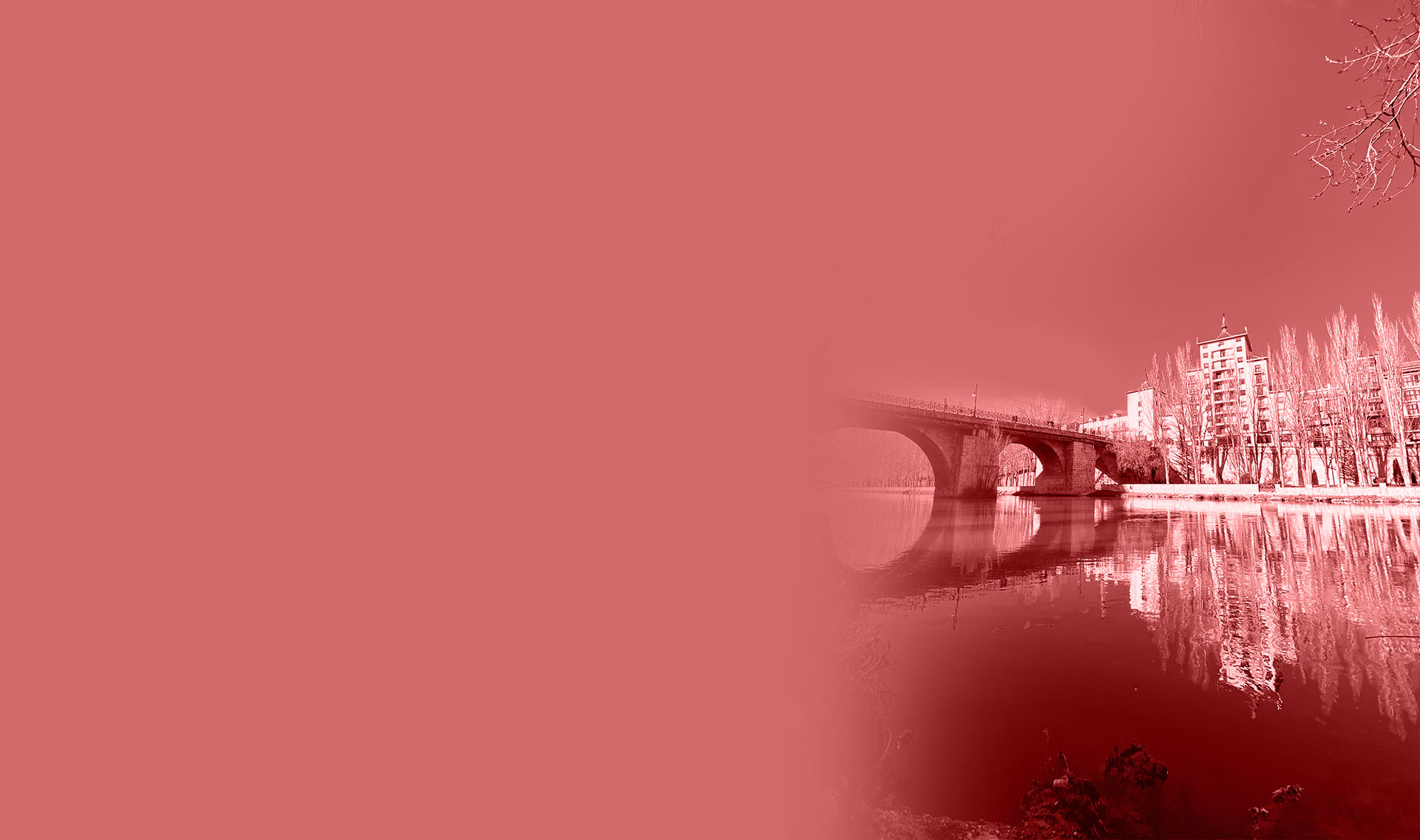
T
he heart of the city is the Duero that gives its name to the town and is part of its history. The Duero was the cause of its first settlement, although it shares prominence with two other smaller rivers that flow into the city itself: the Arandilla and the Bañuelos.
Parallel to the river runs the path known as GR 14, which is a natural walk through a gallery forest formed by a vegetation composed of willows, alders, ash trees and poplars. An ideal place to walk or ride a bike.
The Duero is the great river of Castile and León. As it passes through Aranda, four bridges cross it. The most important and oldest is the one located next to the City Hall. It was the natural entrance to the town and, in times, a tax had to be paid to cross it. The town has more bridges. In the channel of the Arandilla is the Conchuela Bridge, one-eye medieval work. And although the Bañuelos is a river with less flow, it is the most beautiful bridge. It is known as the Roman bridge, although it was actually built in medieval times and was the primitive entrance of the town.
Very close to this is the Barriles pier, a place of leisure and enjoyment that in good weather is very crowded and from which you access small boats with which to take a walk along the river.

